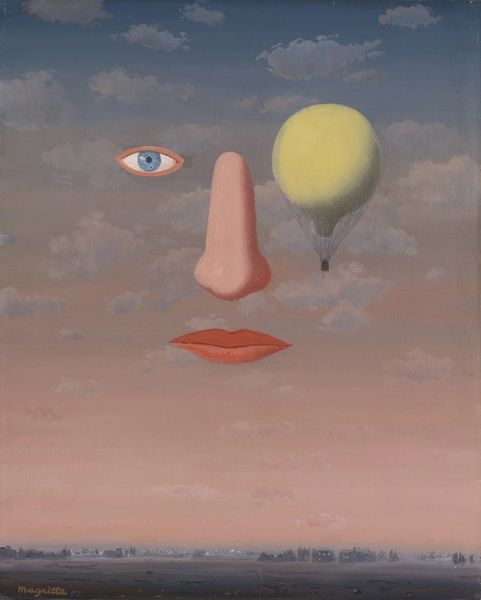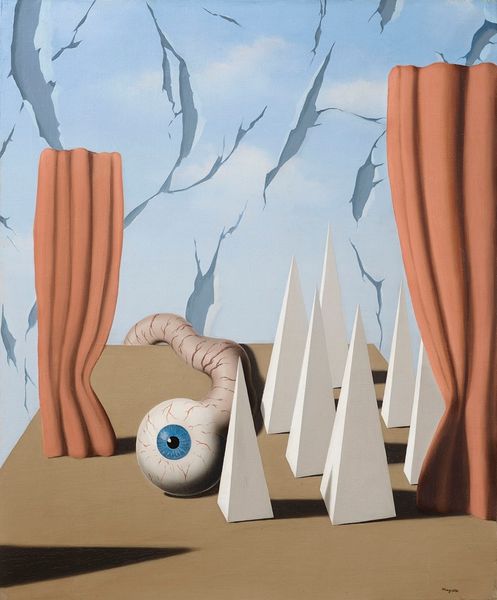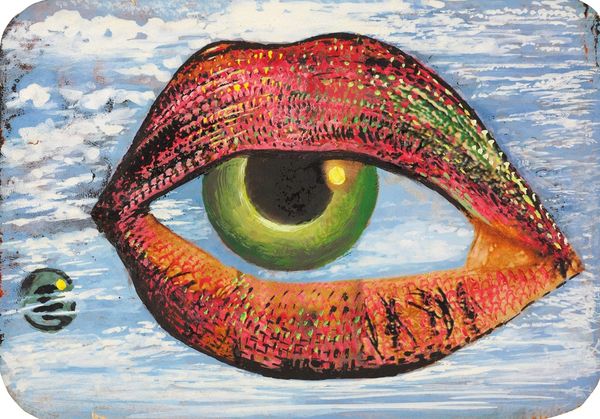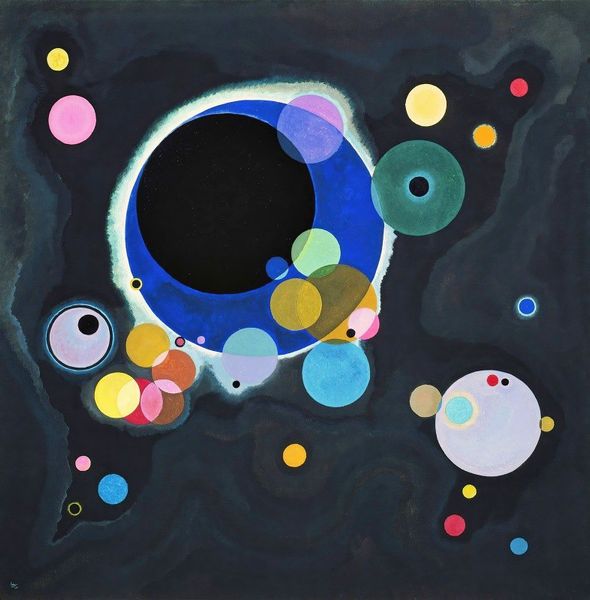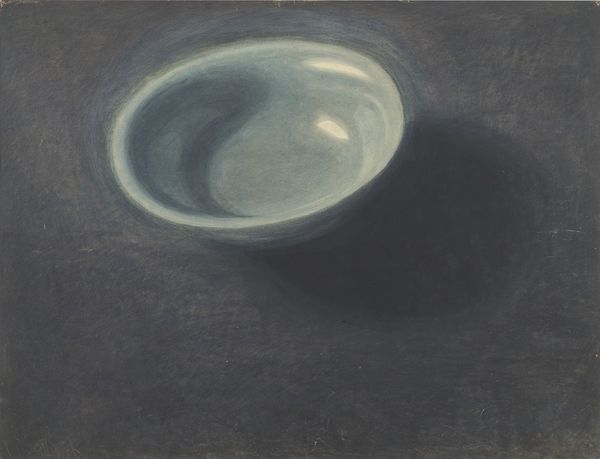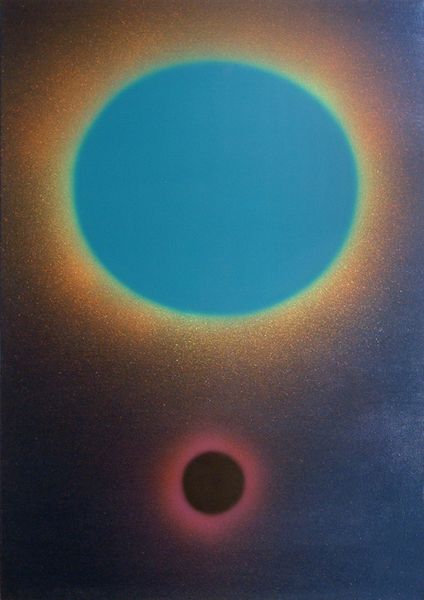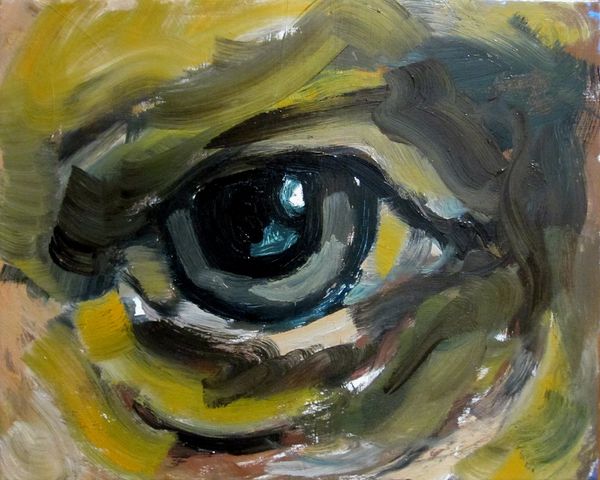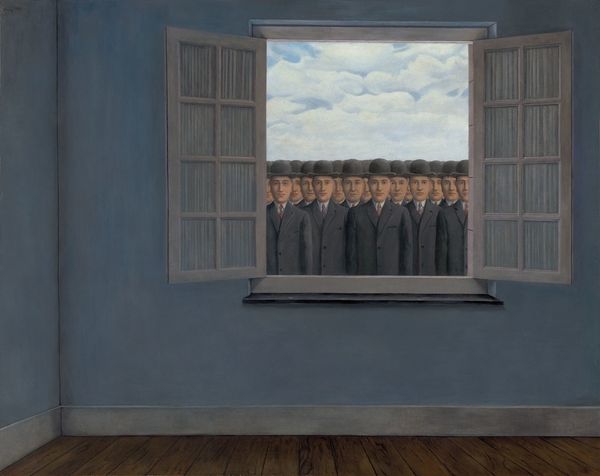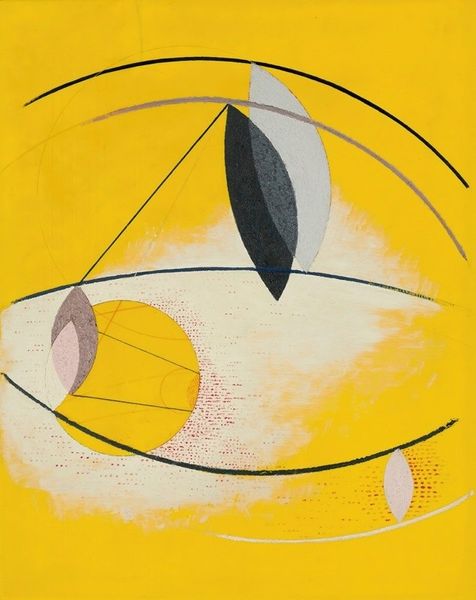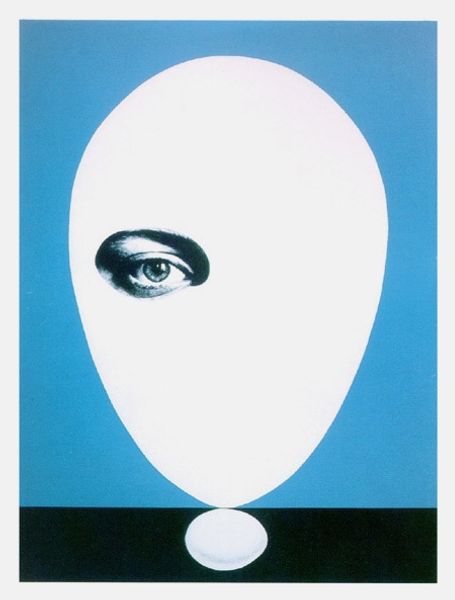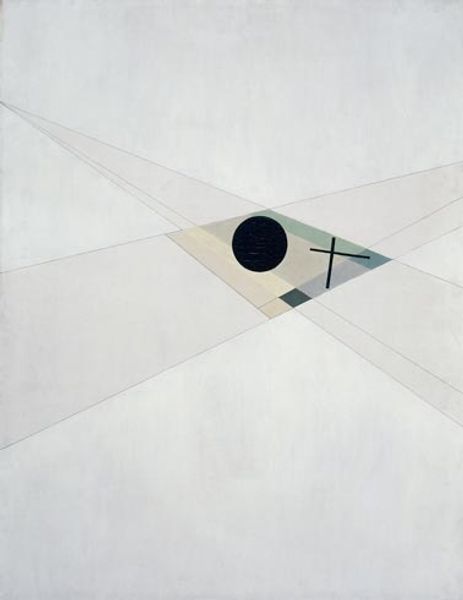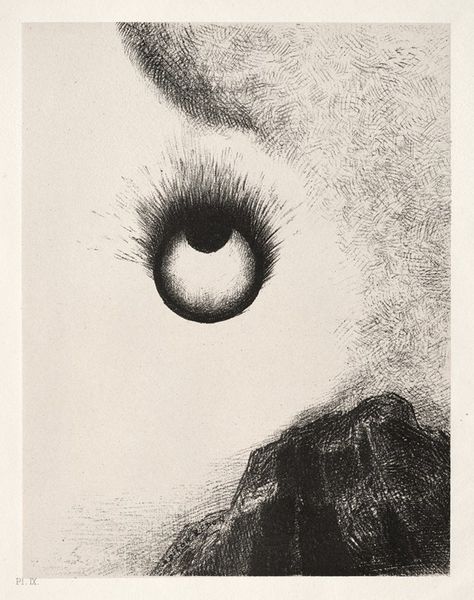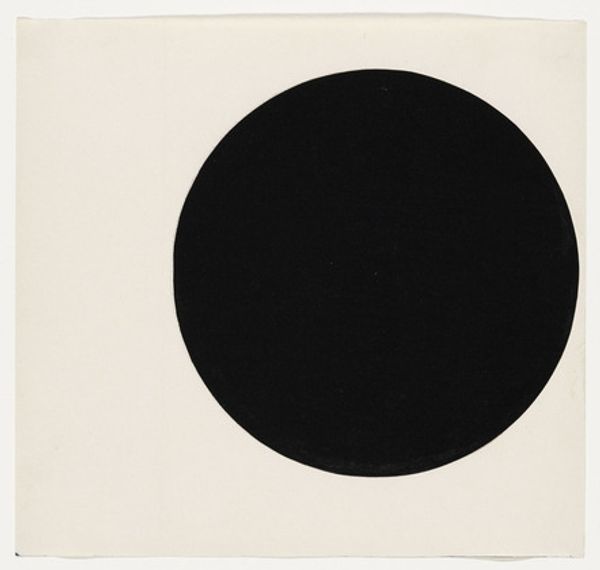
painting, oil-paint
#
portrait
#
painting
#
oil-paint
#
landscape
#
figuration
#
surrealism
#
modernism
Copyright: Modern Artists: Artvee
Curator: The sheer scale of this eye looking back at us is arresting! I find the scene oddly serene, considering how disorienting it should be. Editor: I'm drawn to the uncanny visual pun at work in Rene Magritte’s "The False Mirror," painted in 1929. We see a large, singular eye that reflects, or seems to contain, a blue sky populated with fluffy white clouds and a strange dark orb. Curator: It's unsettling because we expect an eye to perceive the world, not become a miniature version of it. The title intensifies this feeling: If it’s a false mirror, what, exactly, is it reflecting, or what are we meant to see in ourselves when looking at this image? The orb in place of the pupil is particularly disruptive. Editor: Indeed. It creates a sense of voyeurism gone wrong. The painting was created between the two World Wars in Europe. Art critics see Magritte's artistic investigation to highlight perception and representation amid this tumultuous era. Think of the rise of film, mass media, and how images began influencing opinions in an unprecedented manner. This unsettling mirror plays into how easily manipulated perception could be through a constant barrage of curated images and information. Curator: Absolutely! And eyes have such deep cultural significance. Throughout history, in mythology, religion, and art, the eye represents knowledge, insight, vigilance—often divine judgment. Yet, here, that profound symbolism is deliberately confounded. The false mirror mocks the promise of true vision, raising alarms regarding surveillance culture. Editor: One can sense that this uncanny replacement reveals cultural anxieties concerning propaganda, privacy, and how public life was about to radically evolve. A seemingly passive scene evokes these subtle fears by destabilizing the act of viewing itself. Curator: For me, the real trick here is in how Magritte uses an age-old fascination—the all-seeing eye—only to corrupt its symbolic weight by inverting our understanding of what looking really means. This simple, disturbing visual twist says so much. Editor: Well, I believe it continues to hold sway because its critique is constantly relevant given the development of digital imagery, from photography to Artificial Intelligence. Perhaps the greatest trick of Magritte's ‘eye’ is that we continue to fall under its gaze in the 21st century.
Comments
No comments
Be the first to comment and join the conversation on the ultimate creative platform.
